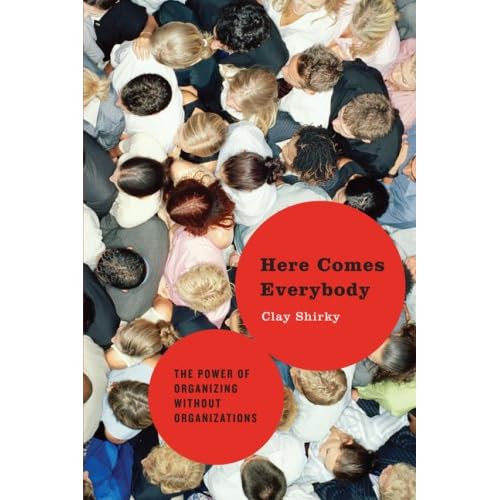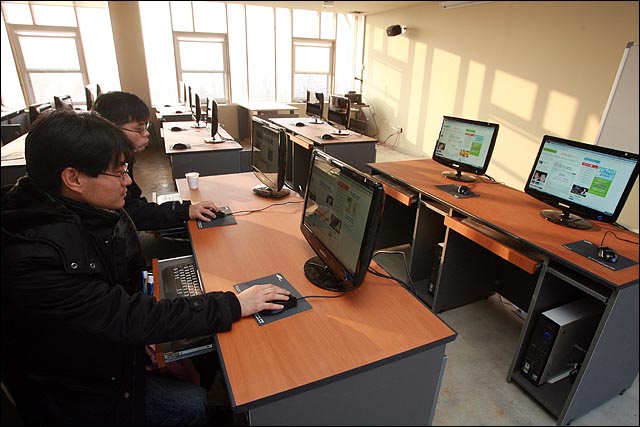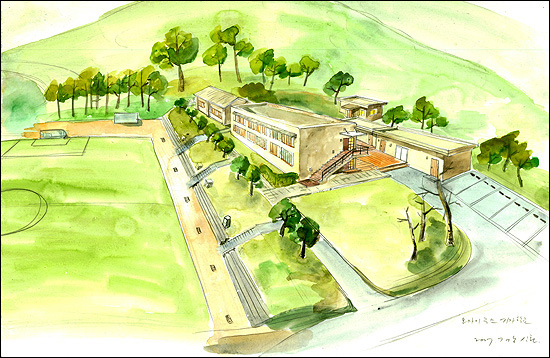Clay Shirky on Organizing Without Organizations
February 28th, 2008 — marycjoyceTonight I went to a Berkman-sponsored talk by Clay Shirky at Harvard Law School o discuss his new book, Here Comes Everybody: The Power of Organizing Without Organizations. Clay Shirky is a professor of new media at New York University, where his classes discuss peer-to-peer technology and how online social networks effect culture.
“The Internet is not a decoration on society,” Shirky begins, “it’s a challenge to it.” He claims that we are currently in the greatest period of innovation for human expression in history. He talks about the previous revolutions – telegraph, telephone, television – and points out that in the past two-way communications didn’t create groups and one-way communications did. (You’ve never heard of a telephone club, have you?) With the Internet, this is changing. “Group action just got easier”, says a Power Point slide projected behind him. “If I had to create bullet-point for my whole talk,” he says, ” that would be it.”
Why did groups form more slowly in the past? Because when you add more people to a group, there are disproportionately more connections (a group of 5 has 10 connections, a group of 15 has 105.) For this reason groups broke down. Now, maintaining these links is easier to produce. This is known as “ridiculously easy group formation,” a key attribute of the Internet. The “reply all” function of e-mail was the first truly social function of the Internet. Having a group conversation became as easy as clicking a button.
This hasn’t been revolutionary in all spheres. Shirky claims that interesting social effects only occur when a technology is deeply rooted in the culture. It is ubiquitous and even boring. All college students and all white collar workers are now online. This is when things get interesting.
Shirky describes online organization as a ladder of increasing levels of complexity:
1. Sharing
In a service like the social bookmarking site del.icio.us, sharing is primarily driven by selfish motives and collaborative structure forms above it.
2. Sharing and Conversation
Action is not coordinated in advance, but coordination can happen subsequently as people identify themselves while taking part in sharing of previously-produced content. For example, when an image made using a new photography technique appeared on the photo-sharing site Flickr, the comments stream soon became a master class in how to reproduce the technique.
3. Collaboration
At the next level of complexity is collaboration, which requires team work. One group of anime fans got together to subtitle the best Japanese anime so it could be brought over to the US. There was no market motivation. When the anime owners created their own subtitles, they tool down there own subtitled versions down. The group members simply loved anime and wanted the best of it to be more widely distributed, so they worked together to identify, subtitle, and post their favorite shows.
4. Collective Action
Collective action is the rarest and most complex form of cooperation. After a flight was left on the runway for 8 hours in 2007, airline passengers got together and forced New York State to pass a Fliers’ Bill of Rights. One passenger, Relo Hanni, started posting comments on news stories about the incident asking other passengers on the flight to contact her. Soon they began a nationwide campaign for a Fliers’ Bill of Rights. Thousands of people signed an online petition. People called their political representatives. The bill failed in Congress, but it succeeded in the New York legislature.
Shirky also gives examples of Belarussian LiveJournal users organizing a flash mob of ice cream eaters that were arrested by the police for demonstrating in the central square of Minsk. Photos of the ice cream eaters being arrested were then posted online, drawing attention to repression in Belarus.
Shirky sees collective action increasing in the future. From the standpoint of the Internet and Democracy Project, we certainly hope it does.
cross-posted on ZapBoom





 Click Here
Click Here